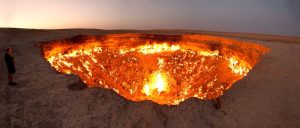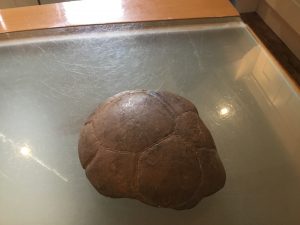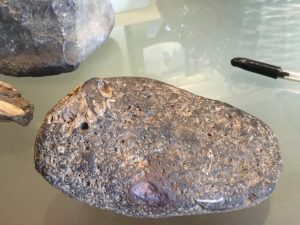Have you ever noticed that things in the natural world often adopt other names because they look like something else? For instance, the dramatic flame-filled Darvaza Gas Crater in Turkmenistan is also known as the ‘Doors to Hell’, because this huge gas-filled crater is constantly burning and looks like many through history have depicted the entrance to Hell. These alternative names can help us to understand more about physical phenomena and shows how science can cross over with parts of our history and culture.

Darvaza Gas Crater in Turkmenistan is also known as the ‘Doors to Hell’
Thinking he had come across two fossils, Thomas from Lancashire sent in two rocks for identification and was fascinated to learn both the scientific and lay names of the two rocks he had found locally to his home and how they helped him to make sense of these Lancashire limestones.

Septarian Concretion (or Nodule) found by Thomas

Probably Carboniferous Limestone, containing the disaggregated remnants of a crinoid (sea-lily)
The geology in this part of the North of England was formed in the Carboniferous Period, some 330-350 million years ago. Popular for its hilly landscapes known as fells, the area is comprised of various limestones, mudstones, siltstones and sandstones which are often well exposed for budding geologists to explore.
Both of Thomas’s finds are very different and yet stem from the same geological period. Knowing their actual and alternative names can help us to form pictures and associations in our minds and therefore make sense of these geological phenomena.
What rocks have you found that look like something else? What name would you give your rocks to help you and others to understand it?
You can find out what Thomas’s rocks are called and what they are also known as in the Fabulous Finds section on the Rockwatch website.
To send us details about your own fabulous fossil finds you can submit a find on the Rockwatch website.
